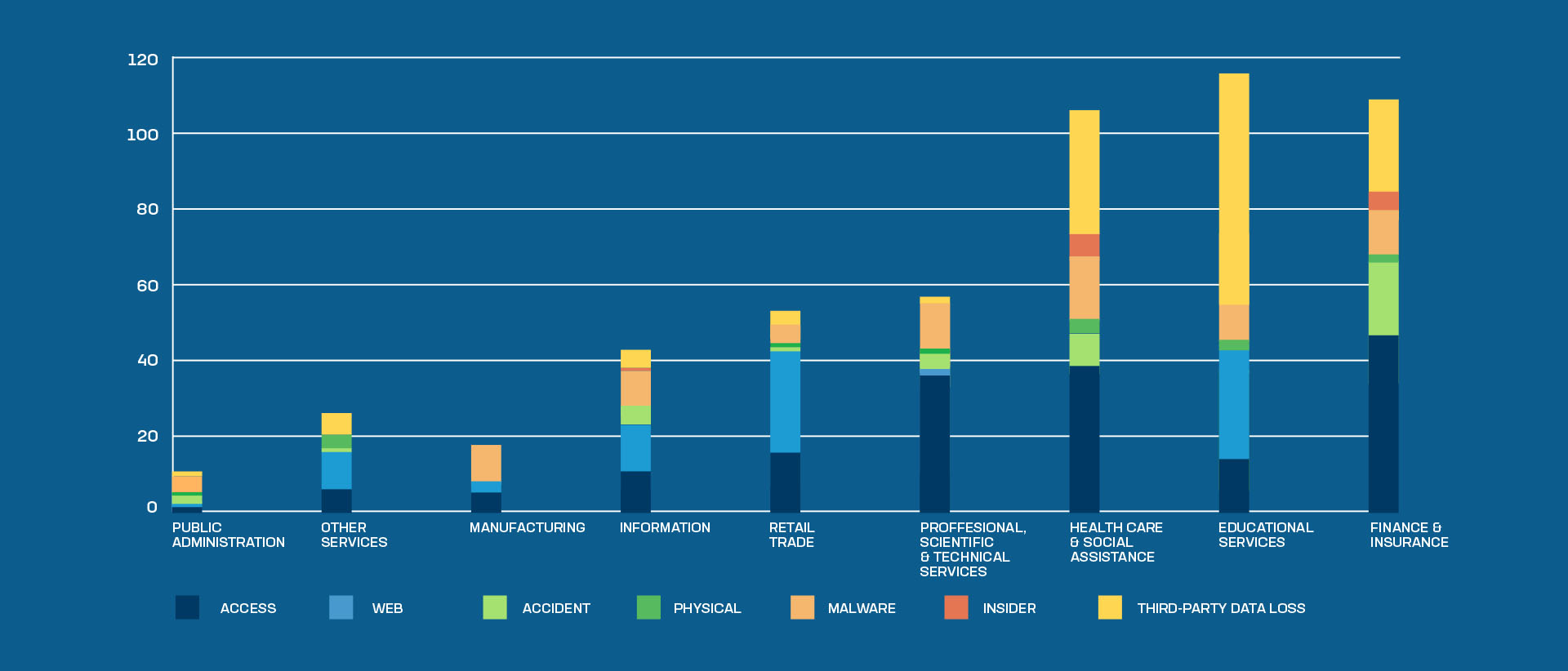フィンテックを念頭に置いたデジタル トランスフォーメーションの課題トップ 5
導入
デジタル トランスフォーメーションは、あらゆる銀行や金融サービス機関にとって大規模なプロジェクトであると言っても、控えめな表現でしょう。 ここ数年、業界リーダーたちはデジタル トランスフォーメーションに伴う課題に対処するため、大小さまざまなプロジェクトを慎重に実施してきましたが、成果が出るまでに時間がかかることが多く、状況は改善していません。 ガートナーによると、銀行および投資業界の CIO の 49%、保険会社の CIO の 44% が 2021 年に自動化への投資を増やす予定である理由は、このためかもしれません。1
この記事では、金融機関がデジタル トランスフォーメーションに正面から取り組む際に直面する 5 つの主な課題について説明します。
1. 貧弱なデジタル体験
顧客体験の質が低いと、顧客離れや収益の損失に直接つながります。 銀行や金融サービス組織は、ポジティブなデジタル体験を求める顧客の高まる需要に応えられなければ、市場シェアを失い、収益性が低下するリスクがあります。
よりスムーズな体験への需要は、よりシンプルで迅速なデジタル体験や、お金に関するアドバイスを提供するアドバイザーテクノロジーなどの「驚きの」機能を提供するフィンテックのイノベーターによって加速しています。 実際、2020年にマッキンゼー・アンド・カンパニーが実施した最近の調査によると、米国の金融意思決定者の40%がフィンテックのアカウントを持っていると答えています。2
COVID-19 パンデミックほど、より良いデジタル体験への需要を加速させたものはありません。 J.D. パワーは、2020年第1四半期に、調査対象となった消費者の30%がパンデミックが始まる前よりもモバイルバンキングアプリをより多く使用し、35%がオンラインバンキングをより多く使用したと報告しました。3 マスターカードは、同期間中に、世界中の消費者の79%、アジア太平洋地域の消費者の91%が非接触型のタップアンドゴー決済を使用していると回答し、大多数がパンデミックが終わった後も非接触型取引を使い続けると回答したと報告した。4
2. 進化するセキュリティ脅威
顧客が複数のチャネル、デバイス、タッチポイントを介してアカウントにアクセスするケースが増えており、デジタル アクセス ポイントはサイバー犯罪者の主な標的となっています。 F5 Labs の 2021 年application保護レポートによると、金融および保険組織では、ランサムウェア (Data Encrypted for Impact [T1486]) や、フィッシングとクレデンシャル スタッフィングの両方の比較的高い割合など、最も一般的な攻撃手法の多くが確認されています (下の図 1 を参照)。 金融業界では、内部者による攻撃や物理的なデータ侵害の発生率も最も高かった。5
CAPTCHA や SMS ベースの多要素認証 (MFA) などのセキュリティ緩和策は、顧客エクスペリエンスに摩擦をもたらすことを念頭に置くことが重要です。 顧客が不満を抱いている場合、収益の減少、顧客の不満、サポート コストの増加につながるリスクがあります。 皮肉なことに、詐欺師はこれらのツールを簡単に回避することができます。 アカウント所有者の満足を維持しながら詐欺行為を防止するには、より効果的で侵害の少ないセキュリティ戦略が必要です。
3. 迅速なapplication革新を実現
複雑なレガシー ネットワーク アーキテクチャに関連する非効率性により、運用コストが大幅に増加します。 多くの組織では、非常に複雑で人為的エラーに対して脆弱なネットワーク アーキテクチャを採用しています。 これらを管理および維持するには、多大な時間とリソースが必要です。 オープン API を使用してフィンテックと提携する (オープン バンキングとも呼ばれる) ことで、一部の銀行は顧客向けに新しく優れたデジタル エクスペリエンスを構築できるようになりましたが、生成される膨大な量の API 呼び出しによって遅延やセキュリティの問題が発生し、コストが増加します。
4. 複雑なアプリポートフォリオと開発プロセス
多くの銀行や金融サービス企業は、人為的エラーに対して脆弱で、非常に複雑なアプリ ポートフォリオを持っています。 これらを管理するには多大な運用投資が必要となり、総所有コストが増加し、ますます非効率かつ安全でないレガシー アプリの維持に貴重な時間とリソースが費やされることになります。 特にアプリ開発チームは、レガシー アーキテクチャ、非効率的な手動プロセス、アプリ開発ライフサイクルにうまく統合されていないピア チームのレビューと手順によって妨げられています。 こうした混乱はイノベーションを遅らせる傾向があり、最先端の顧客体験を提供することが非常に困難になります。
5. 規制上の課題
銀行および金融サービス規制は運営コストに直接影響を及ぼします。 規制遵守に関連する機能に運用コストの 10% を費やしている企業もあります。6 規制による罰金や規制要件の増加と相まって、運用コストが上昇し、パフォーマンスが低下し、顧客体験も理想的とは言えなくなっています。 フィンテックは規制に関して異なる扱いを受けており、業界のリーダーたちはこれを不公平な競争上の優位性としてしばしば指摘している。 例えば、JPMCのCEO、ジェイミー・ダイモン氏は最近、銀行、フィンテック、非銀行に「公平な競争の場」を作ることを目的とした政府の規制を求めた。
最終目標は 2 つあります。
1. 最新のフィンテック機能と競争するために、高度に安全で迅速なイノベーションを実現する
2. 環境全体にわたるアプリと API 配信の自動化とセルフサービスを通じて、安全なアプリの最新化を成功裏に実装します。
イノベーションとデジタル最適化への重点の適切な組み合わせ
組織は、アプリのパフォーマンス、セキュリティ、コンプライアンスを自動化パイプラインに直接統合して開発速度を上げ、開発者のダウンタイムを最小限に抑え、パフォーマンスを最適化する必要があります。 また、特定の環境に縛られない自動化と柔軟なマネージド サービスを通じてオーバーヘッドを削減する適応型アプリ ソリューションを使用して、デジタル トランスフォーメーションの取り組みを迅速に進める必要もあります。
顧客体験の向上
結局のところ、組織の成功は顧客の満足と関心にかかっています。 そのため、あなたの一番の目標(そしてデジタル トランスフォーメーションの主なメリット)は、非常にスムーズで革新的なモバイルおよびオンラインの顧客体験を実現することです。
次のことが可能になります:
- 複数のセキュリティハードルを乗り越えるのではなく、自動認証を使用して顧客体験をシームレスに保ち、顧客の摩擦を最小限に抑えます。
- 顧客の離脱、放棄、収益の損失につながる可能性のある、コストのかかる低レイテンシインスタンスを防止します。
セキュリティとパフォーマンスの強化
イノベーションは最優先事項ですが、セキュリティやパフォーマンスを犠牲にしてはなりません。 適切なソリューションを導入すれば、選択する必要がなくなります。
次のことが可能になります:
- CI/CD エコシステムの統合を有効にし、セキュリティとパフォーマンスのポリシーをコード パイプラインに自動化して、クラウド全体でスムーズかつ安全に実行できるようにします。
- シンプルで高速、かつスケーラブルなマルチクラウド アーキテクチャを使用して、あらゆるデータセンターやクラウドで API を安全に管理します。
- セキュリティスタックオーケストレーションを使用して、セキュリティ変更にかかる時間、コスト、影響、ダウンタイムを削減します。
加速するイノベーションと近代化
ツールとインフラストラクチャを最新化することで、フィンテック企業と競争できるだけでなく、優位に立つことができます。
次のことが可能になります:
- アプリ配信とセキュリティサービスの手動実装を回避し、ビルド環境を高速化します。
- 自動化を使用してセキュリティおよびネットワーク インフラストラクチャサービスを展開および構成する
- コンテナ化された環境での自動管理を通じてシャドーITを防止し、安全なイノベーションを推進します。
- 組織とアプリに適したポリシー管理戦略を実装することで、マルチクラウド管理の煩わしさを解消します。
デジタル トランスフォーメーションは、銀行や金融サービス組織がフィンテックと効果的に競争するのに役立ち、イノベーションとアプリの近代化を加速し、パフォーマンスとセキュリティのバランスを効果的に取り、顧客が期待する肯定的なデジタル エクスペリエンスを提供できるようになります。
[1] ガートナー: 金融サービスにおける自動化の成功への 4 つのステップ、Finextra
[2] パンデミック中にフィンテックに対する米国顧客の態度がどのように変化しているか、マッキンゼー・アンド・カンパニー
[3] パンデミックの間、デジタルバンキングが急増している。 それは続くだろうか?アメリカン・バンカー
[4] マスターカードの調査によると、消費者はより清潔で非接触の選択肢を求めて、日常の買い物に非接触型決済を採用している。マスターカード
[5] 2021年application保護レポート補足: セクターとベクトル、F5 Labs
[6] インテリジェント オートメーションが次世代の金融サービスの構築にどのように貢献しているか、techUK
[7] JPモルガン・チェースCEOジェイミー・ダイモン氏: フィンテックは銀行にとって「巨大な競争上の」脅威である、CNBC
